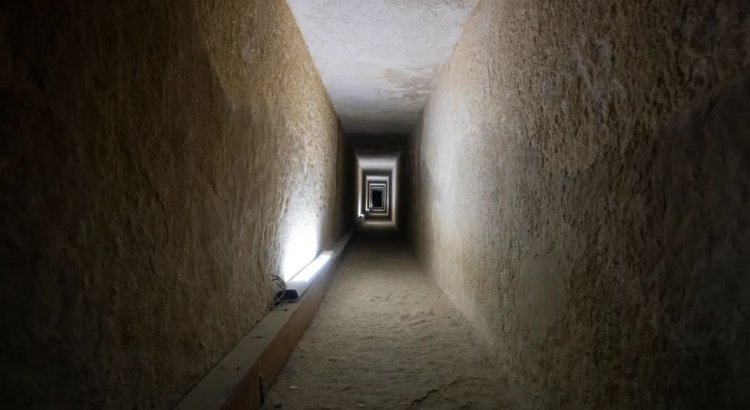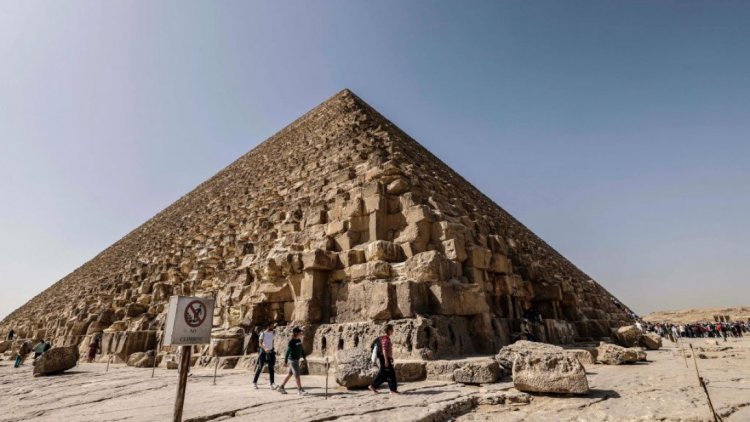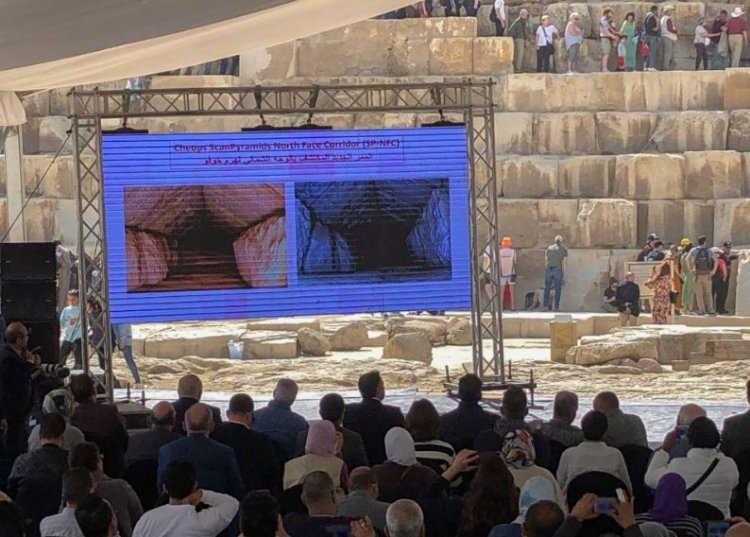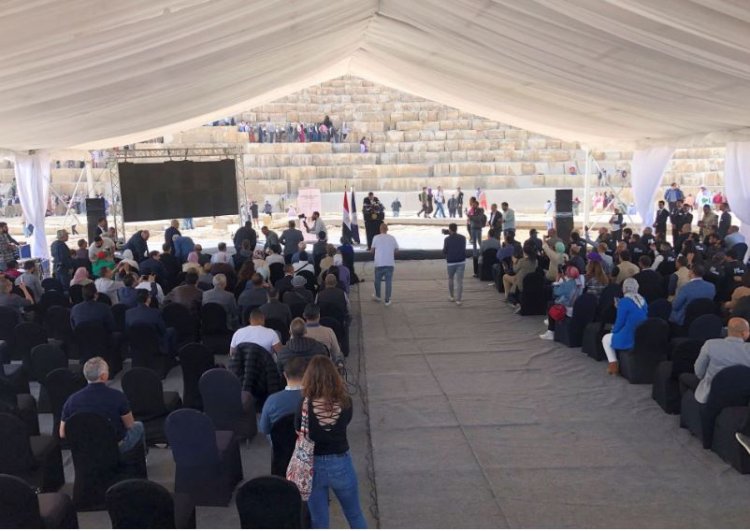New passage was discovered inside the pyramid of Khufu
Scientists have uncovered a hidden passage in the Great Pyramid of Giza.

The Minister of Tourism and Antiquities, Ahmed Issa, announced the discovery of a new passage inside the pyramid of Khufu.
Issa said, in a press conference in front of the pyramid of Khufu today, Thursday, that through the pyramids exploration project, a corridor 9 meters long and 2.1 meters wide was discovered, indicating that work on the project had continued since 2015.
He explained that the work was carried out in cooperation with international universities from America, France, Germany, Japan and Canada, in addition to Egyptian universities, the Supreme Council of Antiquities and the Ministry of Tourism and Antiquities.

Scan Pyramids project
The nine-meter corridor was discovered near the main entrance to the 4,500-year-old Great Pyramid of Giza, and it could lead to more discoveries.
The discovery inside the pyramid, the last of the Seven Wonders of the Ancient World still standing, was made as part of the Scan Pyramids project which since 2015 has been using non-invasive technology including infrared thermography, 3D simulation and cosmic ray imaging to peer inside the structure.

Scientists detected the passage through cosmic ray muon x-ray imaging, before recovering images of it by feeding a 6-millimeter-thick endoscope from Japan through a small joint in the pyramid's stones.

In 2017, Scan Pyramids researchers announced the discovery of a void at least 30 meters deep inside the Great Pyramid, the first major internal structure to be found since the 19th century.
An article published in the journal “Nature” on Thursday, said the discovery could contribute to knowledge about the construction of the pyramid and the purpose of the gabled limestone structure that sits in front of the passage.

Great Pyramid
The Great Pyramid was built as a huge tomb around 2560 BC during the reign of Pharaoh Khufu or Khufu. Built at a height of 146 meters (479 ft), it now stands at 139 meters high and was the tallest building made by humans until the Eiffel Tower in Paris in 1889.
Mostafa Waziri, head of Egypt's Supreme Council of Antiquities, said the unfinished corridor was likely created to redistribute the pyramid's weight around the main entrance now used by tourists, about seven meters away, or around a room or other space that has yet to be discovered.

Waziri added that five chambers above the king's burial chamber in another part of the pyramid may have been built to redistribute the weight of the massive structure, and it is possible that the pharaoh had more than one burial chamber.


 Shrouq
Shrouq 












